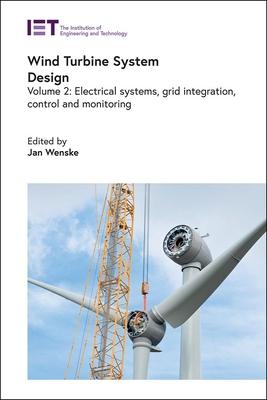Wind energy is a pillar of the strategy for mitigating greenhouse gas emissions and staving off catastrophic climate change, but the market is under tremendous pressure to reduce costs. This results in the need for optimising any new wind turbine to maximise the return on investment and keep the technology profitable and the sector thriving. Optimisation involves selecting the best component out of many, and then optimising the system as a whole.
This second volume of Wind Turbine System Design focuses on electrical systems, grid integration, control and monitoring. Chapters written by experts in the field cover electrical safety, generator and converter design, hardware in-loop testing, turbine control and automation, structural health monitoring, control of wind farm systems, and integration of local energy systems. Readers will be able to make systematic choices to design the best turbine system for the given situation.
Wind Turbine System Design: Volume 2: Electrical systems, grid integration, control and monitoring is a valuable reference for scientists, engineers and advanced students engaged in the design of wind turbines, offering a systematic guide to these components.
